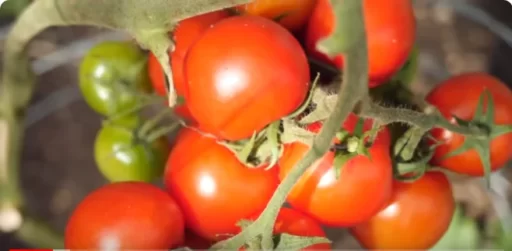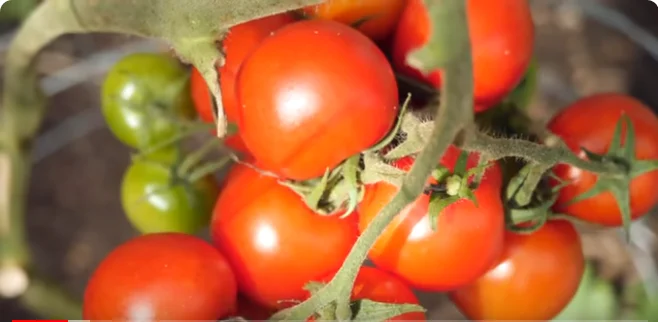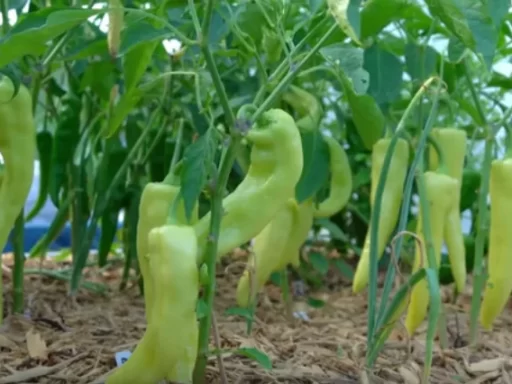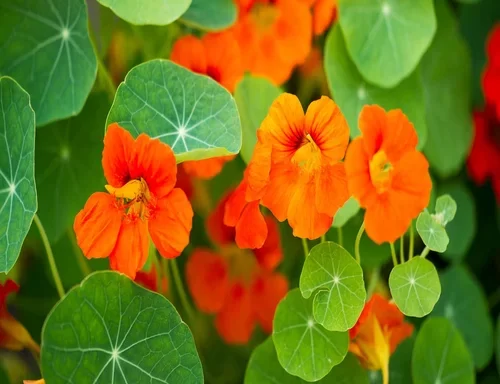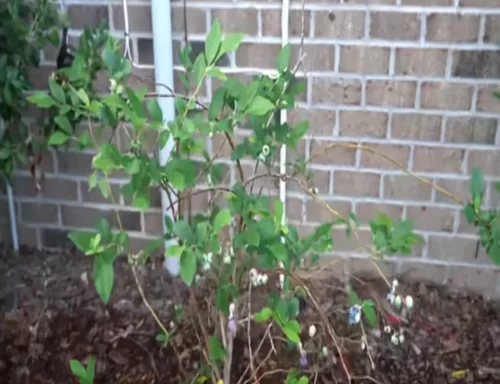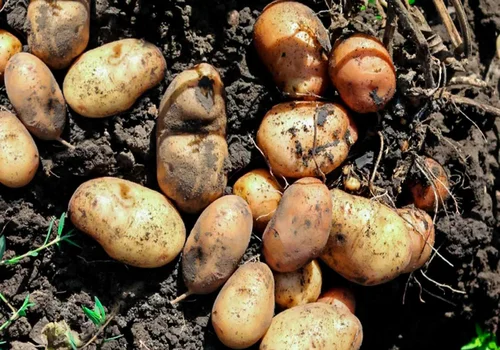Growing tomatoes is a fulfilling yet challenging endeavor. As gardeners, we aim to maximize fruit yield, maintain healthy plants, and ensure that our crops thrive. One of the most debated topics among tomato growers is the practice of pruning. Many believe that removing suckers from tomato plants increases production, but this is actually a myth. In this article, we will debunk that myth, explain the anatomy of a tomato plant, and provide a step-by-step guide to pruning for the best results. Let’s dive into the nuances of tomato pruning and learn how to get the most out of your garden.
Understanding Tomato Plant Anatomy
Before discussing pruning, it’s essential to understand how a tomato plant grows. The main stem of the tomato plant is where the magic happens. Off this main stem, flower clusters form. Once these flowers are pollinated, they turn into fruit. Along the way, leaf nodes sprout at 90-degree angles from the main stem, and in the corners between the leaf and the stem, small growths called “suckers” appear.
Suckers are often the subject of debate in tomato pruning. Some resources advise removing them for the health of the plant, but this advice is misleading. Every sucker has the potential to become a new main stem, which will also produce flowers and fruit. In other words, removing suckers reduces the number of flowers and, ultimately, the amount of fruit your plant produces.
Debunking the Pruning Myth
Many believe that removing suckers results in more tomatoes, but this is far from the truth. In fact, removing suckers decreases the number of flowers and fruit your plant can produce. Each sucker that grows into a new stem creates more flowers, which means more tomatoes. By eliminating these suckers, you’re effectively limiting the plant’s potential to yield a higher harvest.
If you allow suckers to grow into main stems, you will have multiple stems on your plant. For example, if you allow two suckers to grow, you’ll have three main stems, resulting in three times the number of flowers and fruit compared to a single-stemmed plant. The key to maximizing tomato production is to let as many suckers as possible grow into main stems.
When to Avoid Removing Suckers
While it may seem counterintuitive, you shouldn’t always prune your tomato plants. The decision to prune depends on several factors, including the type of tomatoes you’re growing and the space available in your garden.
There are four main types of tomato plants: indeterminate, semi-determinate, determinate, and dwarf. Indeterminate varieties grow as long vines and are the only type where sucker removal may be beneficial. On the other hand, semi-determinate, determinate, and dwarf varieties grow as bushes with a predetermined height. Pruning these varieties will drastically reduce fruit production.
For indeterminate varieties, the suckers grow into new main stems, and each new stem means more fruit. In contrast, pruning determinate or semi-determinate varieties should be limited to removing leaves below the first flower cluster. Any pruning above this point will decrease fruit production.
Reasons to Prune Indeterminate Tomatoes
1. Managing Vertical Growth
One of the primary reasons for pruning indeterminate tomato plants is to manage their vertical growth. Depending on how you support your plants—whether through stakes, trellises, or strings—you may need to control their height. Indeterminate tomatoes can grow uncontrollably if left unpruned, often overwhelming the support structure.
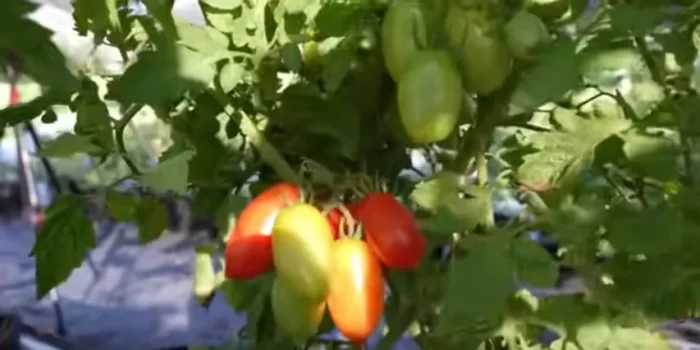
Pruning the plants helps keep them manageable. By removing some of the suckers, you allow the plant to focus its energy on producing a few main stems that are easier to support. This also reduces the risk of the plant breaking or tangling with neighboring plants.
2. Optimizing Space and Airflow
Another reason to prune indeterminate tomato plants is to manage spacing and airflow. In small backyard gardens, space is often limited, and overgrown tomato plants can crowd each other. When tomato plants grow unchecked, they form dense thickets that restrict airflow, leading to increased risk of diseases such as blight.
Pruning allows gardeners to grow more plants in a smaller space. By training the plants to a single stem, you can plant them closer together, maximizing the number of plants in a given area. Improved airflow between plants reduces the risk of disease, ensuring a healthier crop.
3. Growing Larger Fruits
For those aiming to grow larger tomatoes, such as beefsteak varieties, pruning can help. By limiting the number of stems and flowers on the plant, you allow the plant to focus its energy on producing fewer, but larger, fruits. Each plant has a limited amount of nutrients to distribute among its fruits, so fewer fruits mean more nutrients per fruit, resulting in larger tomatoes.
However, this approach is not necessary for smaller tomato varieties, such as cherry tomatoes, where fruit size is less of a concern. In fact, pruning cherry tomatoes has little to no effect on fruit size.
Pruning Cherry Tomatoes: A Different Approach
When it comes to cherry tomatoes, pruning is almost unnecessary. Whether you prune them or let them grow wild, the fruit size remains consistent. In fact, allowing cherry tomatoes to vine out can result in larger yields. The more suckers you allow to grow into main stems, the more flowers and fruits the plant will produce.
For cherry tomato varieties like the Super Sweet 100, letting the plant grow freely with minimal pruning can lead to enormous harvests. A single plant can produce hundreds of small fruits if allowed to vine out without interference.
Dealing with Diseased Leaves
Another reason you may consider pruning is to manage diseased leaves. However, caution is necessary. In humid climates, removing diseased leaves can expose the plant to further infection through the open wounds left behind. In such conditions, it may be better to leave the diseased leaves in place and allow the plant to outgrow the disease.
In drier climates, removing diseased leaves may help control the spread of the disease, but this should be done with care to avoid opening the plant to more significant problems.
Conclusion: The Balance of Pruning
Pruning tomato plants is a balancing act. The key to success is understanding when and why to prune. For indeterminate varieties, allowing suckers to grow into new stems can significantly increase your yield. However, managing the plant’s size and ensuring good airflow is also essential. For determinate varieties, pruning should be minimal to avoid reducing fruit production.
In the end, the decision to prune depends on your goals, garden space, and the type of tomatoes you’re growing. By following the guidelines in this article, you can make informed decisions and enjoy a bountiful tomato harvest.
Frequently Asked Questions
- Should I remove all suckers from my tomato plants? No, removing all suckers will limit your plant’s production. Allow some suckers to grow into main stems for a higher yield.
- What is the best time to prune tomato plants? Prune indeterminate tomato plants early in the growing season to manage their size and shape.
- Can pruning increase the size of tomatoes? Yes, for larger varieties like beefsteak tomatoes, pruning can help by allowing the plant to focus on fewer, bigger fruits.
- Is pruning necessary for cherry tomatoes? Pruning is not necessary for cherry tomatoes. Letting them grow freely often results in higher yields.
- How can I prevent diseases while pruning? Use clean tools and prune during dry conditions to reduce the risk of infection.
- Do all tomato plants require pruning? Only indeterminate varieties benefit from pruning. Determinate and dwarf varieties should not be heavily pruned.
- Can pruning help with airflow and spacing? Yes, pruning can improve airflow and manage the spacing between plants, reducing the risk of disease.

